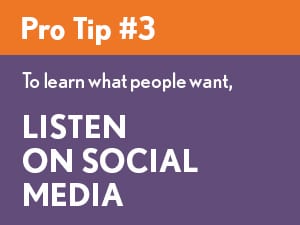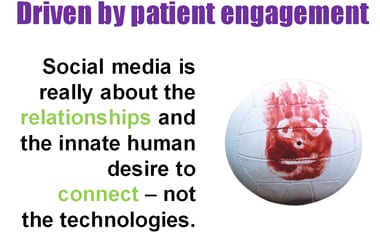Healthcare Marketers: Align your Marketing Budget with the Organization’s Strategic Initiatives
 With healthcare costs rising, hospital marketing executives must scrutinize spending more than ever. To strengthen the chances of achieving market share objectives while ensuring leadership approval of your expenditures, align your marketing budget with the organization’s business plan.
With healthcare costs rising, hospital marketing executives must scrutinize spending more than ever. To strengthen the chances of achieving market share objectives while ensuring leadership approval of your expenditures, align your marketing budget with the organization’s business plan.
For example, if your organization has strategic pillars, allocate budget dollars to those pillars; if your organization has specific goals for growth, service line volume and other similar metrics, directly demonstrate how your budget supports those goals. Jump-start a more effective marketing budget with these two basic, but critical tips:
Set attainable goals for a stronger return on investment (ROI).
Only market services that are ready to be promoted. For hospitals, this means if an area of the hospital isn’t properly prepared to take on new patients due to manpower shortages, long wait times, faltering patient experience scores or quality disruptions, put your marketing money elsewhere. Similarly, distributors and manufacturers need to consider production and service indicators. Don’t waste your marketing dollars promoting products if back orders are present or customer service departments aren’t prepared to take on new volume. The recommendation sounds pretty basic, but how many times has the marketing dollar been spent based on the “squeaky wheel” factor – the physician who demands a billboard; the sales manager who needs to reach her quotas? Keep open channels of communication between production and sales so that you spend wisely and can attain ROI on your marketing dollars.
Communicate and collaborate.
Regularly let key stakeholders know how your marketing efforts are contributing to the organization’s overall business plan and financial health. When you keep your colleagues informed, you will a) find ways to extend your budget through other departments, b) help others gain a better understanding for proper use of the marketing dollar, and c) get better ideas and more internal support/adoption for your marketing strategies.
Coming up next: our final topic in this healthcare marketing and branding series covers the benefits of stepping outside your marketing comfort zone – unleashing new ideas to reach new audiences. Check back soon for that!
If you missed the last blog posts in our series, catch up now:


 This week in our Healthcare Branding Series, let’s focus on the importance of digital content strategies.
This week in our Healthcare Branding Series, let’s focus on the importance of digital content strategies. On our new website, we promise to help clients
On our new website, we promise to help clients  In a
In a  With so many patient-facing changes in healthcare these days, it’s no surprise the role of the hospital community relations director is also changing. Once focused primarily on communications, advertising and outreach, today’s community relations directors now drive patient experience, hospital strategy and business development.
With so many patient-facing changes in healthcare these days, it’s no surprise the role of the hospital community relations director is also changing. Once focused primarily on communications, advertising and outreach, today’s community relations directors now drive patient experience, hospital strategy and business development. Recently, we heard some compelling stories about a client’s brand. We were conducting consumer in-depth interviews (IDIs) to better understand how people make personal healthcare decisions, as well as their perceptions of our client’s brand.
Recently, we heard some compelling stories about a client’s brand. We were conducting consumer in-depth interviews (IDIs) to better understand how people make personal healthcare decisions, as well as their perceptions of our client’s brand. Healthcare consumers are more empowered than ever to choose according to their perceptions, and they know it. As health plans get more flexible in letting people pick providers – and online platforms enable word-of-mouth to cover more ground at faster speeds – the competition to be anyone’s provider of choice is fierce.
Healthcare consumers are more empowered than ever to choose according to their perceptions, and they know it. As health plans get more flexible in letting people pick providers – and online platforms enable word-of-mouth to cover more ground at faster speeds – the competition to be anyone’s provider of choice is fierce. Later this week, I will moderate an interactive panel for
Later this week, I will moderate an interactive panel for 